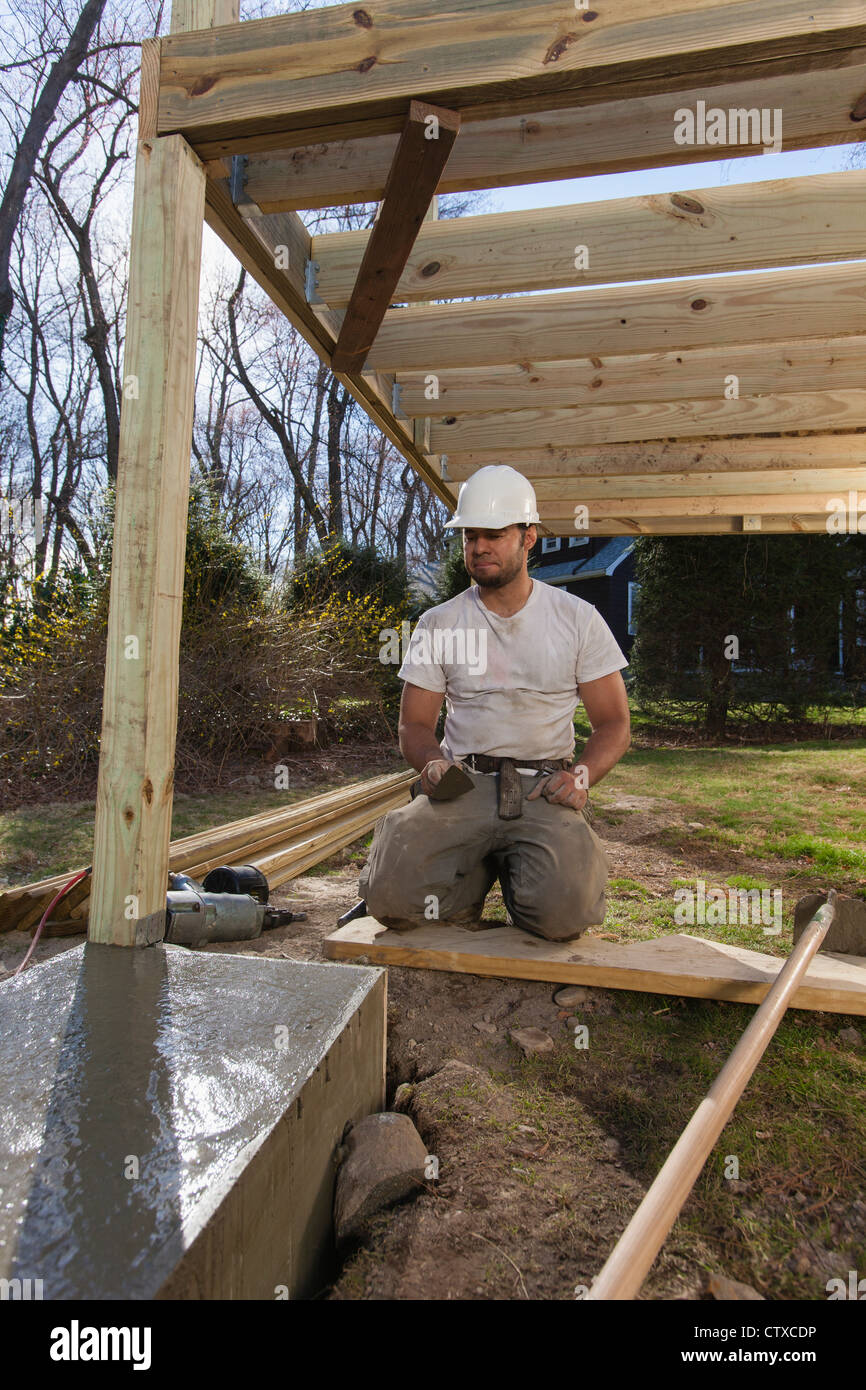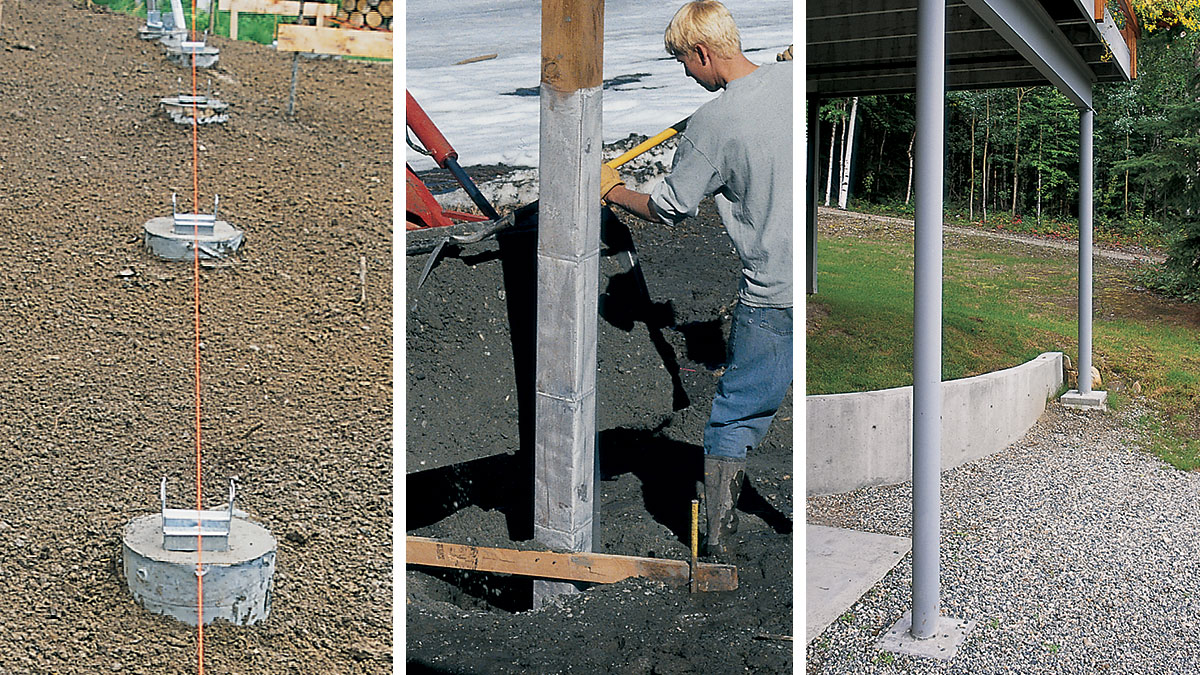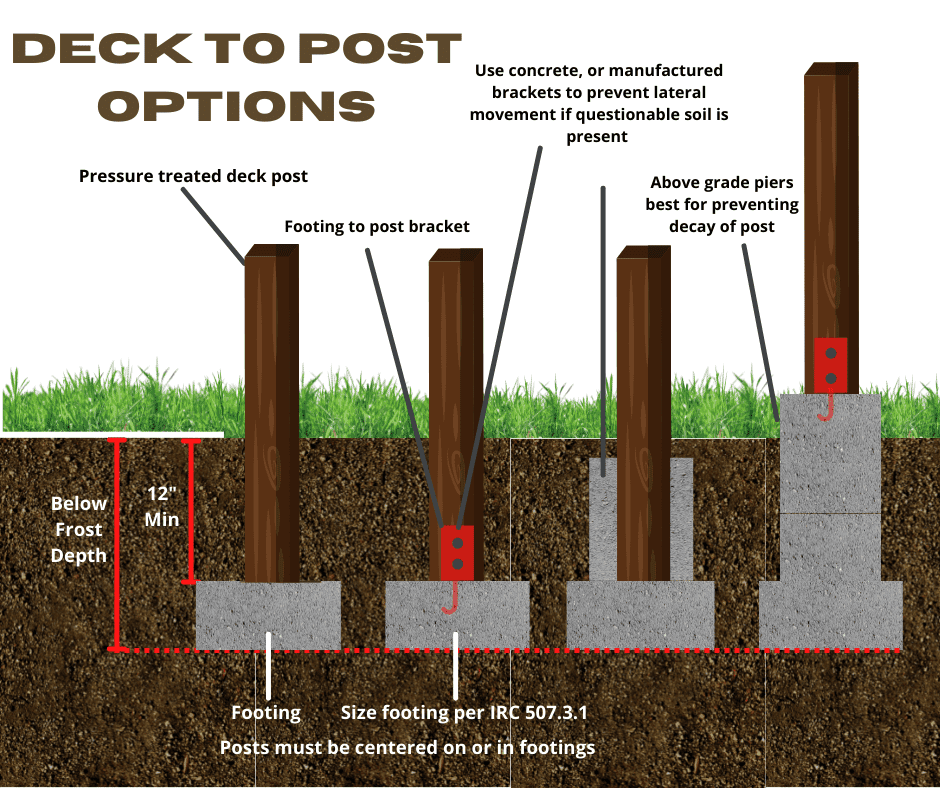Professional Tips for Putting Up Deck Footings to Assistance Your Outdoor Space
When it comes to developing a deck, one of the most important elements to take into consideration is the installation of correct footings. These grounds are the structure upon which your outside area will rest, offering stability and support for years to come. What exactly does it take to set up deck grounds properly?
Value of Appropriate Deck Grounds
Proper deck footings are necessary for guaranteeing the security and long life of your exterior room. When building a deck, it is important to focus on the structure on which it will certainly rest. Deck footings provide the essential assistance for the entire structure and help disperse the weight uniformly - Deck Footings. Without strong and correctly installed grounds, your deck may become unsteady, causing security hazards and costly repairs.

In addition to stability, proper deck footings also add to the long life of your exterior area (Deck Footings). Footings that are designed and constructed to withstand the components and dirt problems in your location will aid stop the deck from changing or clearing up gradually. By ensuring the grounds are appropriately sized and set up, you can minimize the danger of damages to the deck framework, prolonging its life-span and lowering the requirement for expensive repair work or substitutes

Picking the Right Kind Of Grounds
When picking the appropriate type of grounds for your deck, it is very important to consider factors such as soil conditions, regional structure codes, and the general style of your outdoor space. The sort of footing you pick will certainly play a crucial duty in ensuring the stability and durability of your deck.
One common kind of ground is the concrete footing. Concrete footings are appropriate for a lot of soil conditions and supply superb assistance for decks.
Sometimes, you might require to make use of customized grounds, such as heap grounds or deep structures, if you are developing a large or multi-level deck. These grounds are created to disperse the weight of the deck over a larger area, guaranteeing stability and preventing sinking or clearing up.
Prior to choosing a kind of footing, it is vital to seek advice from neighborhood structure codes and policies to guarantee compliance. Furthermore, consider the style and planned use your exterior room. Factors such as the dimension, shape, and load-bearing requirements of your deck will certainly influence the sort of footing that is most ideal.
Preparing the Ground for Footing Installment
To correctly prepare the ground for footing installation, it is crucial to assess the dirt problems and take required actions to guarantee security and sturdiness of the deck. The initial step is to excavate the location where the footings will certainly be installed.
As soon as the area has actually been dug deep into, the next step is to portable the dirt. This can be done using a plate compactor or by utilizing a hand meddle. Compacting the soil helps to remove any spaces or air pockets, which can cause working out and instability gradually.
After condensing the soil, it is very important to lay a layer of crushed rock or smashed stone at the end of the excavation. This will certainly give drainage and assistance to avoid water from pooling around the footings, which can cause disintegration and instability.
Step-by-Step Overview to Putting Up Deck Footings
After correctly preparing the ground for footing setup, the following action is to start the procedure of installing deck footings. This step-by-step guide will certainly give you with a clear understanding of how to set up deck footings for your outside area.
Establish the place: Beginning by noting the placements of the deck grounds making use of risks and string. Ensure that the areas straighten with the layout and format of your deck.
Dig the openings: Use a post hole miner or an visit our website auger to dig the openings for the grounds. The deepness and size of the holes ought to be in accordance with neighborhood building regulations and the details needs of your deck style.
Level the openings: Use a level to make certain that the openings are dug to the appropriate deepness and are degree with each other. (Deck Footings)
Add gravel: Place a layer of crushed rock at the end of each hole to improve drainage and prevent the timber from deteriorating.
Put the footings: Place the grounds right into the openings, seeing to it they are degree and plumb. Use a degree and a measuring tape to guarantee precision.
Safeguard the footings: Pour concrete into the holes around the grounds, loading them to the top. Use a post level to guarantee the footings continue to be level as the concrete sets.
Permit time for healing: Allow the concrete remedy according to the manufacturer's guidelines before waging the deck building.
Common Blunders to Prevent Throughout Footing Setup
One crucial facet to consider throughout the setup of deck grounds is preventing common blunders that can compromise the security and durability of your outdoor space. While deck footings might seem like a straightforward and straightforward part of the construction process, overlooking specific aspects can cause costly fixings and potential security hazards down the line.

Additionally, disregarding to set up correct drain measures can trigger water to accumulate around the footings, bring about rot, degeneration, and the eventual weakening of the deck's structure. Making use of the incorrect kind of footing material or stopping working to sufficiently safeguard the footings can jeopardize their architectural integrity.
To prevent these errors, it is important to speak with an expert or adhere to industry guidelines to ensure appropriate ground installment. By doing so, you can ensure the stability and longevity of your outside area, giving a safe and pleasurable environment for many years to find.
Verdict
In verdict, installing appropriate deck footings is vital for the security and durability of your outside area. By selecting the ideal sort of footings and effectively preparing the ground, you can make certain a strong structure for your deck. Adhering to a step-by-step guide and staying clear of usual blunders throughout footing installment will certainly better my company boost the durability and safety of your deck.
Proper deck footings are necessary for making certain the security and durability of your outside area. The grounds serve as a connection between the deck and the ground, allowing the weight of the deck and its occupants to be dispersed equally right into the soil.One common type of ground is the concrete footing. Insert the grounds: Put the grounds into the openings, making certain they are degree and plumb. Protect the grounds: Put concrete into the openings around the footings, loading them to the top.